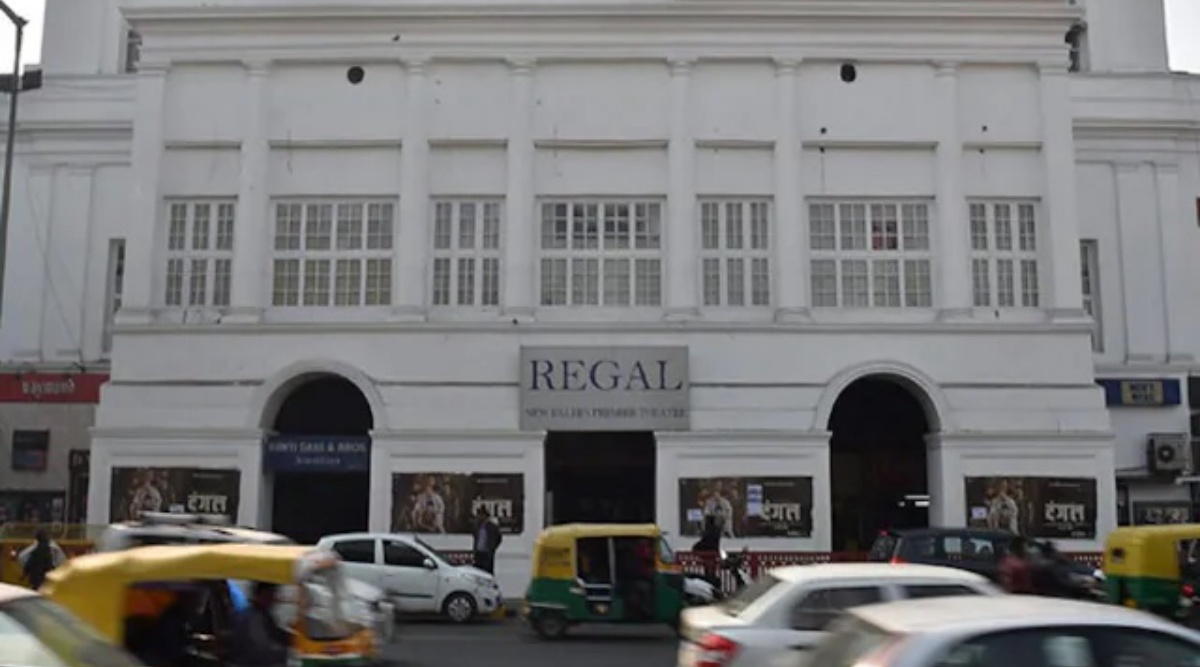 A view of the Regal Cinema in New Delhi. (Photo: PTI)
A view of the Regal Cinema in New Delhi. (Photo: PTI) Exactly five years ago, in March 2017, Raj Kapoor’s films Mera Naam Joker and Sangam were screened at the Regal Cinema as a sign off for the legendary theatre.
In 1932, when Regal Cinema began operations – as a venue for ballets, plays and talkies – the late director’s father, Prithivraj Kapoor, used to stage shows here.
As a young boy, Raj used to accompany him on some of those jaunts. So, when he grew up in stature as an actor and director, he made sure all his movies were screened at Regal. Not only this, Oscar-winning Hollywood film Gone with the Wind had its Indian premiere here in 1940.
Once considered a landmark, the legendary building in Delhi’s Connaught Place has not been able to sustain itself post the closing down of the eponymous theatre – literally as well as metaphorically.
Earlier this week, noting that the heritage structure of Regal Building must be preserved and protected, the Delhi High Court ordered repairs to secure its structural integrity.
After going through a report submitted by IIT-Delhi in this regard, Justice Sanjeev Sachdeva remarked: “The building is a heritage building and, as such, the heritage structure of the building has to be protected and preserved.”
The normal expected life of the building is already over as it is over 80 years old, IIT-Delhi has said in its report, also discouraging any “ad-hoc” repairs or modifications without proper analysis.
The three-storeyed building was designed by architect Walter Sykes George, who – after helping Edwin Lutyens and Sir Herbert Baker in designing the capital complex of New Delhi – established a private practice in the Capital, and went on to design St Stephen’s College, and Sujan Singh Park, Delhi’s first apartment complex. The design of the Regal Building is a fusion of Georgian and Mughal architecture.
In fact, many Regals came up around the same time. In Shimla, the Regal Building is still a historic site, situated in the middle of Lakkar Bazaar.
A few years ago, a fire left the building in shambles and post restoration, it was given a heritage status. A public skating facility occupies the first level of the building whereas the lower level is shared by shops and a school.
At Mumbai’s Colaba Causeway, the Regal Cinema is an Art deco movie theatre, airing the Laurel and Hardy work The Devil’s Brother in 1933 as its opening film. Today, it is a multi-use building combining a cinema with shops at street level.
Till the 90s, Regal retained its place as one of the Capital’s hotspots – a theatre adorned with artwork and among the few that would host press screenings and premieres; the Standard restaurant with its helpings of espresso coffee; and Regal’s own snack bar. India’s first discotheque, The Cellar, was opened at one end, along with a cafe called Parlour in the mid-1960s.
But years rolled by and Regal came down from being a genteel establishment to a run-down building, infamous equally for rowdy hawkers as for the pickpockets who operated on the pavements outside.
Once Regal Cinema was shut, its owners announced a plan to open a multiplex in its place.
“With time everything changes and it’s high time for Regal to close down and open up again in a new avatar,” Vishal Chaudhary, one of its owners was quoted as saying in 2017, “You can’t run business on sentiment all the time.”
Later in the same year, the building’s first and second floors were leased out to Madame Tussaud’s to open the famed wax museum tourist attraction. But a couple of years down, the museum shut shop too.
A spokesperson from Merlin Entertainment, which owned the museum, said, “Even though it was a prime location, there were a lot of issues — encroachment by street vendors, hawkers, parking issues, and the place being overcrowded and unsafe for visiting families with small children.”
Along with Odeon, Plaza and Rivoli, Regal comprised the Connaught Place’s Fab Four – all of them now suffering their own cycles of decay and regeneration now.
- The Indian Express website has been rated GREEN for its credibility and trustworthiness by Newsguard, a global service that rates news sources for their journalistic standards.

